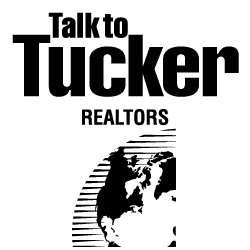
Salesforce has announced plans to expand in Indianapolis. It is moving to space in the Chase Tower, which will be renamed Salesforce Tower. Credit A J Mast for The New York Times
Officials at Salesforce declined to be interviewed. Local tech entrepreneurs and real estate specialists hope the company’s expansion will help attract more technology companies.
In 2016, Indianapolis companies said they planned to create 3,700 new jobs, about two-thirds of those in the tech sector, said Ian Nicolini, vice president of Develop Indy, an economic development agency. That share is up from about one-fifth of 4,000 new jobs that were planned in 2015, he said.
“It is a city where you have a lot of access to talent,” he said. “It is easy to find a mentor here.”
David Becker, an Indiana native who founded First Internet Bank in Indianapolis in 1998, is among those who have stuck with the city. As he acquired other companies in other cities, he began to relocate employees there.
“Once people visit, they realize it’s not a cow town; it’s got everything the big cities have,” Mr. Becker said. “People are especially blown away by the housing costs, and the quality of the schools.” Higher education is also a selling point: Universities such as Butler, DePauw, Indiana and Purdue and the Rose-Hulman Institute of Technology are producing graduates with broad expertise in tech-related fields. Add to that a revamped Indianapolis airport that has many direct flights to and from both coasts.

Scott Dorsey of High Alpha, a venture capital firm that backs tech start-ups in Indiana. CreditA J Mast for The New York Times
Salesforce joins early adopters of Indianapolis such as Angie’s List, the online site for local services and contractors, which moved to Indianapolis from Columbus, Ohio, in 1996, and ExactTarget. Another Indianapolis company in the city’s tech vanguard was Interactive Intelligence, founded in 1994. It developed call center software and was acquired in December for $1.4 billion by Genysys, based in Daly City, south of San Francisco. Officials at Genysys said at the time they still planned a large presence in Indianapolis.
Several start-ups were formed by ExactTarget’s principals after the company was acquired by Salesforce in 2013. ExactTarget’s founder, Scott Dorsey, for instance, left Salesforce but stayed in Indianapolis and formed High Alpha, a venture capital firm that provides funds, training and networking opportunities for tech start-ups in Indiana. He said he stayed in the state because he likes the lifestyle and the work force. “People are nice, very hard-working and very loyal.”
Scott McCorkle, who succeeded Mr. Dorsey in 2014 as chief executive of ExactTarget after serving as president of technology and strategy, is another angel investor who is sharing his tech expertise with start-ups. “I have been spending time with about half a dozen of them,” he said. “It’s not only having lunch with these entrepreneurs, it is product marketing, messaging and sales plans.”
Still, a cloud hovers over Indiana’s tech landscape. The vice president-elect, Gov. Mike Pence of Indiana, ruffled the tech industry in 2015 when he signed the Religious Freedom Restoration Act, which allows businesses to cite religion as a reason to refuse to serve customers — a move that critics said was aimed at the gay community.
Several tech leaders immediately protested. A letter-writing campaign led by a group of tech executives including Marc Benioff, the chief executive of Salesforce, urged Mr. Pence to stand down, saying the legislation was bad for business, condoned illegal discrimination and muddied the separation between church and state. Mr. Pence said it was not discrimination but rather a way to ensure religious freedom.
“Technology professionals are by their nature very progressive, and backward-looking legislation such as the R.F.R.A. will make the state of Indiana a less appealing place to live and work,” the letter said. Although the General Assembly softened the measure, it remains on the books. The newly elected governor, Eric Holcomb, Mr. Pence’s lieutenant governor, is expected to follow a similar approach to social issues.

A meeting of Indy Tech Fellowship members in Indianapolis. Indy is a paid internship program. Credit A J Mast for The New York Times
The legislation has had a chilling effect, said David L. Johnson, president and chief executive of the Central Indiana Corporate Partnership and head of BioCrossroads, a new organization whose goal is to build on Indiana’s agriculture sector and mesh it with life sciences and the tech sector. “Some companies have had a hard time hiring people,” he said.
But he remains bullish on Indianapolis. “The corporate community stepped in and said it had to be changed,” Mr. Johnson. “That gives you a sense of how this place works.”
For Ms. Zegiestowsky, the decision to stay in Indiana after college was a bit of a gamble. With her connections through the Indy Tech Fellowship, she signed on with BidPal, a company that develops fund-raising software for nonprofits. She is part of a small team of engineers and hopes they will give her a chance to play a larger role than she might have in larger Silicon Valley firms.
“I wanted to be part of a company where I wasn’t just a number,” she said.
Ms. Zegiestowsky is paid about $60,000 annually, above the state’s $50,000 median, though less than tech graduates can earn on either coast. But in Indianapolis, that salary goes far. Ms. Zegiestowsky and a roommate pay about $1,600 for a spacious two-bedroom, two-bath apartment in the heart of the compact downtown, which was laid out by Alexander Ralston, who worked with Pierre L’Enfant to design Washington and modeled Indianapolis after the nation’s capital.
When Ms. Zegiestowsky is not at work, she can walk to the city’s arts, culture and growing restaurant, craft beer and club scene, where jazz has long been a fixture.
“This is definitely a great place for young professionals,” she said.
An article on Wednesday about Indianapolis’s supporting technology businesses as a way to make up for diminished manufacturing misstated part of the name of the location of Salesforce’s new regional headquarters there. It is Monument Circle, not Monument Square. The article also misstated the year that David Becker, an Indiana native, founded First Internet Bank. It was 1998, not 1986.
_________





 The Hawkins Agency © 2017. All Rights Reserved. F.C. Tucker Company, Inc.
The Hawkins Agency © 2017. All Rights Reserved. F.C. Tucker Company, Inc.